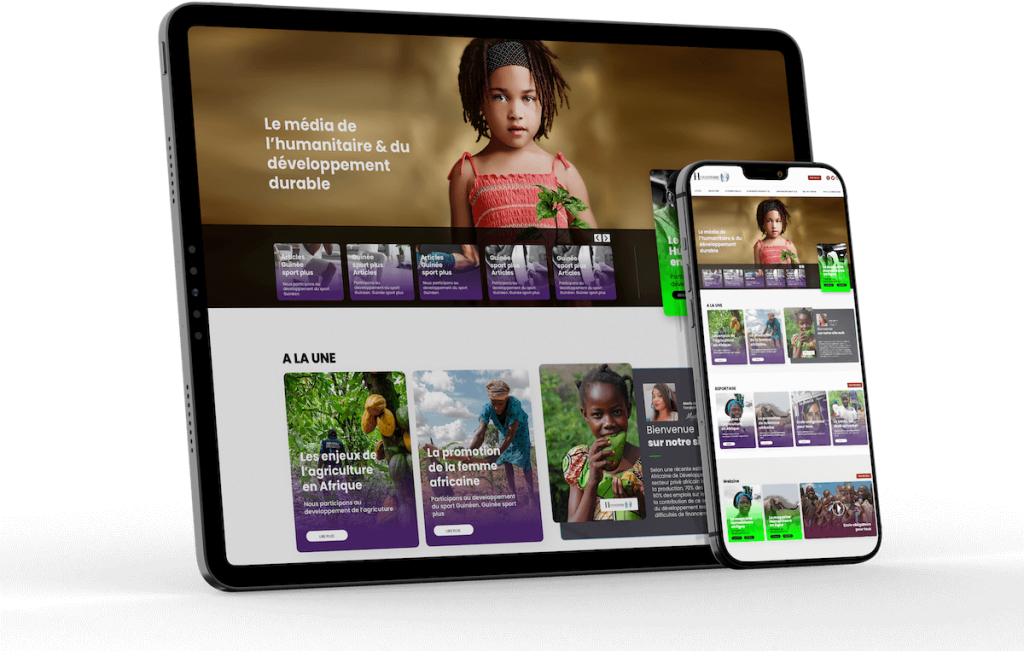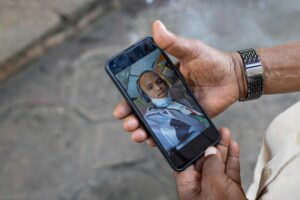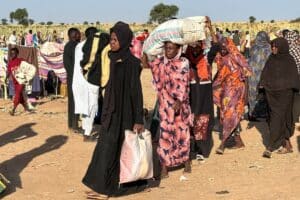Abidjan- Ivory Coast
Monday 08 July 2024
The 2024 rainy season in Côte d’Ivoire, like all the others, was expected by the population and the authorities. Everyone knew it would be dangerous, and perhaps even more deadly than previous seasons, given the alarming international and local weather forecasts. The Société d’Exploitation et de Développement Aéroportuaire, Aéronautique et Météorologique SODEXAM had forecast difficult weather conditions for the country. It indicated a risk of heavy rains and flooding in June 2024, with rainfall totals below average across the country. An Orange alert for June 21, 2024 had been issued for the Autonomous District of Abidjan, with rainfall of between 70 and 120 mm expected in 12 hours. Orange vigilance was announced for several Abidjan communes, including Cocody, Songon, Abobo, Bingerville, Marcory, Treichville, Koumassi, Yopougon and Port-Bouët. A weather alert came into force from June 25 to 27, 2024, warning of potentially dangerous weather conditions. The alert indicates a medium risk, with a high probability of flooding, disruption to road traffic, power cuts and overflowing sewer systems.
To this end, a series of measures were announced and taken by the administrative and political authorities. Major investments were made in the sanitation and drainage sector to improve stormwater management. A watch and warning system was set up and reinforced, with special weather bulletins issued regularly to inform the population of the risks involved. The three color-coded alert levels (yellow, orange, red) have been clarified to enable people to adopt a watchful attitude during the rainy season. In addition, the government, in collaboration with technical bodies such as the Office national de la protection civile (ONPC) and the Groupement des sapeurs-pompiers militaires (GSPM), has drawn up crisis management plans for rapid intervention in the event of an emergency. Awareness-raising campaigns were conducted to inform the population of precautionary measures to be taken, such as avoiding areas at risk of flooding and securing their property. A plan to evacuate certain areas was prepared and implemented. Unfortunately, this was not enough. Once again, the toll was heavy. The rains, leading to flooding, killed people and caused significant material damage across the country, particularly in major cities such as Abidjan, Yamoussoukro and San-Pedro. Anticipatory measures failed to prevent the worst.
Unpredictable weather
With all the technological advances and monitoring systems to enable SODEXAM to better anticipate and manage risks during the rainy season, meteorology in Côte d’Ivoire has proved complex and unpredictable. The tools and methods used to better anticipate climatic variations have come up against certain uncertainties due to the complexity of climatic systems. It is important to note that there were significant differences between the weather in Côte d’Ivoire in 2023 and 2024. In 2024, temperatures were slightly higher than in 2023. For example, the global average surface air temperature was 1.52°C higher than in the period between February 2023 and January 2024. Precipitation was more erratic in 2024, with periods of heavy rain followed by drier periods. In 2023, precipitation was more uniform. In 2024, there was an increase in extreme weather events, such as floods and storms, compared with 2023. These variations are partly due to the effects of climate change, which continue to influence weather conditions around the world.
Climatic variations have been atypical for the region since the start of the rainy season, with temperatures varying between 24°C and 35°C depending on the month and region. Rainfall was moderate, with peaks in June and July. Relative humidity was high, sometimes reaching 88% in March. Cloud cover fluctuated, with periods of clear skies and cloudier moments. The rainy season in Côte d’Ivoire is scheduled to end at the end of July in the southern half of the country, while it is expected to extend into September or October in the northern half.
To be more precise, overall temperatures in Abidjan varied between 24°C and 30°C, with occasional heat peaks. Rainfall was frequent and sometimes intense, with monthly totals reaching 261 mm in July. Relative humidity was high, often in excess of 80%, contributing to a sensation of muggy heat. Cloud cover was heavy, with many cloudy days and frequent showers.
In Yamoussoukro, temperatures ranged from 22°C to 31°C, with occasional heat peaks. Rainfall was frequent and sometimes intense, with monthly totals reaching 165 mm in June. Relative humidity was high, often in excess of 80%, contributing to a sensation of muggy heat. Cloud cover was heavy, with many cloudy days and frequent showers. In San Pedro, temperatures ranged from 23°C to 31°C, with occasional heat peaks. Rainfall was frequent and sometimes intense, with monthly totals reaching 354 mm in June. Relative humidity was high, often in excess of 80%, contributing to a sensation of muggy heat. Cloud cover was heavy, with many cloudy days and frequent showers. This climatic upheaval took its toll on the country.
Extensive material and human damage
During the rainy season, many infrastructures were damaged, including homes, roads and bridges. In Abidjan, at least 24 people lost their lives between June 13 and 22, and two are missing due to flooding. The main causes of death were drowning and landslides. The floods caused considerable damage to infrastructure, including homes, roads and bridges. Several neighborhoods were severely affected, with houses flooded and roads cut off. The Groupement des Sapeurs-Pompiers Militaires (GSPM) carried out 46 interventions, securing 386 people and evacuating 18 others to medical centers. Rescue efforts were intensive to minimize the impact of the bad weather. In Yamoussoukro, several infrastructures, including homes and roads, were damaged by the flooding. Local authorities have been hard at work repairing and rehabilitating the affected areas. Unfortunately, there was some loss of life. Two deaths have been confirmed as a result of flooding and landslides. Emergency services were mobilized to assist those affected.
Temporary reception centers were set up to house the victims, and food and essential supplies were distributed. In San Pedro, five people drowned, including three children. Flooding affected 79 families, displacing 165 people. Many homes were damaged, and infrastructure such as roads and bridges suffered extensive damage. The local authorities have put crisis management plans in place to bring relief to the families affected. Reception centers have been opened to house disaster victims, and food and material aid has been distributed. The loss of human life could have been avoided. These events underline, if proof were needed, the vulnerability of certain areas to bad weather and the importance of prevention and risk management measures. For the rest of the season, SODEXAM is forecasting high cumulative rainfall. This could lead to further flooding in certain regions. Local authorities and emergency services remain on alert to respond rapidly to emergency situations.
To reduce the risks and the number of cases of intervention, residents in at-risk areas are advised to take precautionary measures, such as securing their property and avoiding flood-prone areas during periods of heavy rainfall. It is therefore prudent to remain vigilant and follow the authorities’ recommendations to minimize the risk of material and human damage observed to date.
How are seasonal forecasts made in Côte d’Ivoire ?
SODEXAM uses weather stations throughout the country to collect real-time data on temperature, rainfall, humidity and other climatic parameters. The data collected is fed into sophisticated climate models, which simulate future weather conditions. These models take into account factors such as ocean currents, winds and temperature variations. Meteorologists analyze model results to identify trends and anomalies.
They also compare forecasts with historical data to refine their predictions. Seasonal forecasts are then disseminated to the public via weather bulletins, alerts and press releases. SODEXAM also uses social media and its website to inform people about weather risks. It collaborates with international meteorological organizations to exchange data and forecasting techniques, thereby improving forecast accuracy. These steps make it possible to provide reliable seasonal forecasts and anticipate weather risks, helping to protect populations and infrastructures.
By Roselyne Kandel for Humaniterre
(roselyneaka@yahoo.fr)





